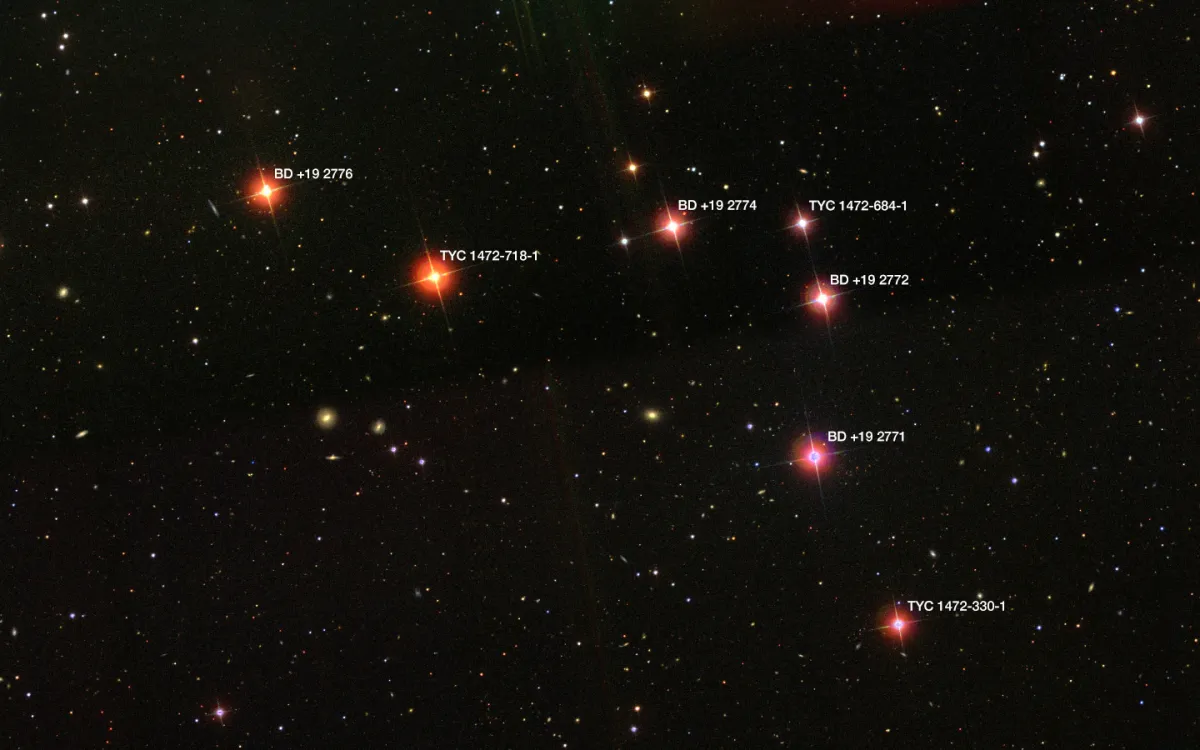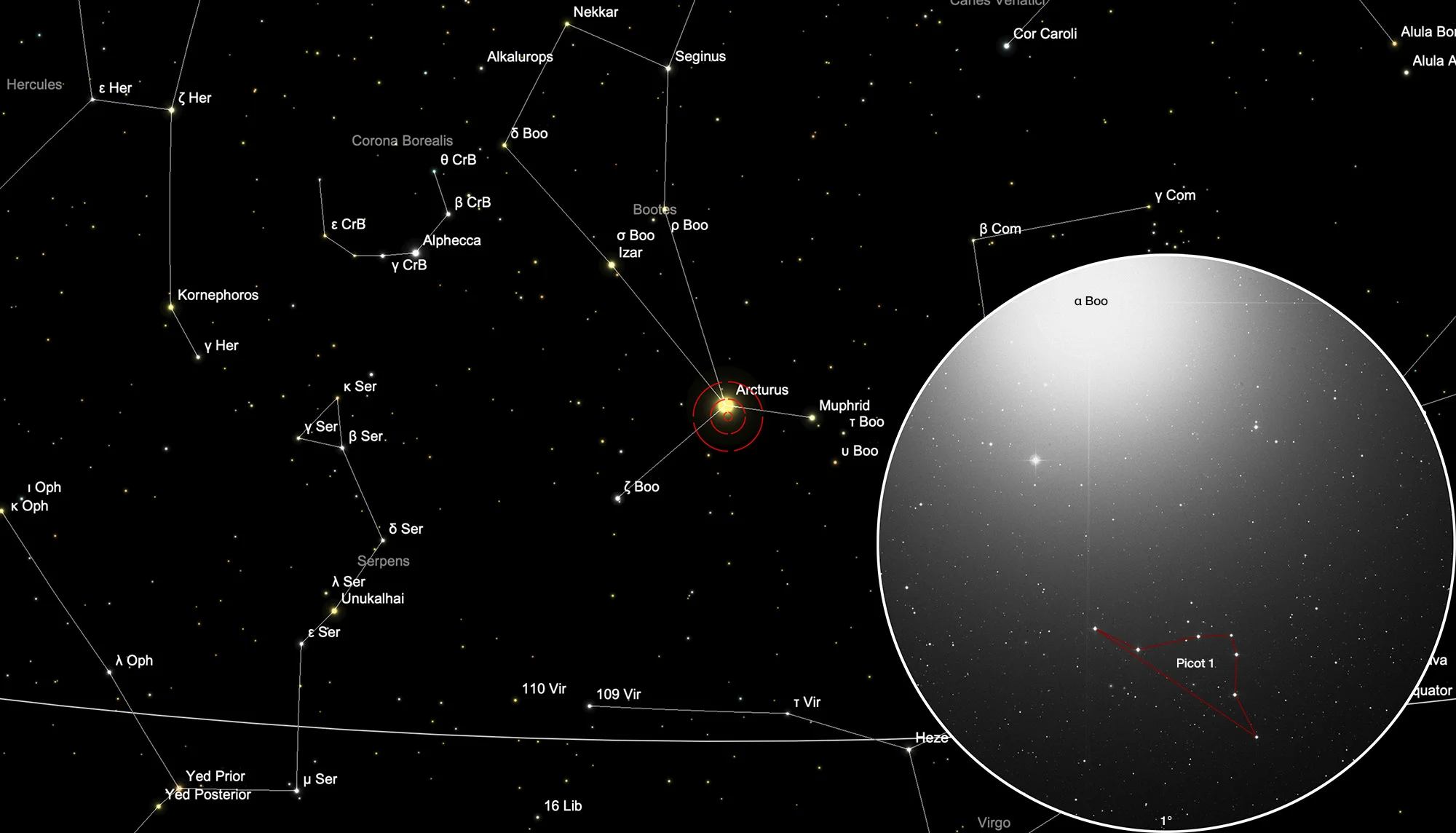Napoleons Hat (Picot 1)

History
This asterism was discovered in 1998 by the French amateur astronomer Fulbert Picot and published in April in «Ciel Extrême». It is listed as ANR 1414+18 (ANR = amas non répertoriés = unlisted clusters) with the nickname «Chapeau de Napoléon». [551, 552]
Physical Properties
This is not a true star cluster, but a star formation, i. e. the stars appear close together only from our perspective. The seven stars, which have apparent visual magnitudes of 9.4 to 10.6, are of different spectral types, are distributed over a distance of 53 to 862 parsecs (173 to 2813 light years) and also do not show any common motion.
| Name | RA [hms] | Dec [dms] | vMag | spType | Dist [pc] | PM RA [mas/y] | PM Dec [mas/y] |
|---|---|---|---|---|---|---|---|
| TYC 1472-330-1 | 14 14 28.349 | +18 25 47.96 | 10.39 | 122.513 | +41.764 | -45.872 | |
| BD +19 2772 | 14 14 36.764 | +18 34 22.89 | 9.54 | F5 | 186.317 | -65.354 | -4.872 |
| BD +19 2771 | 14 14 37.694 | +18 30 12.97 | 9.4 | G0 | 158.133 | -26.018 | +36.426 |
| TYC 1472-684-1 | 14 14 38.984 | +18 36 22.57 | 10.59 | F5 | 281.619 | +5.028 | -2.539 |
| BD +19 2774 | 14 14 53.422 | +18 36 17.68 | 9.69 | F8 | 189.645 | -32.826 | -7.332 |
| TYC 1472-718-1 | 14 15 19.937 | +18 34 58.62 | 9.4 | 862.589 | -16.976 | -16.926 | |
| BD +19 2776 | 14 15 38.683 | +18 37 12.48 | 9.79 | K5 | 53.159 | -102.354 | +113.037 |
Finder Chart
Napoleons hat can be found in the constellation Bootes, approximately half a degree south of Arcturus (α Boötis). On 27 April it is in opposition to the Sun and crosses the meridian at local midnight. The best time for observation is from December to October.
Visual Observation
400 mm Aperture: In the 21 mm Ethos eyepiece, the star formation is very prominent and easy to find. With the field of view of 1.17°, the bright star Arcturus can still be placed nicely outside the field of view so that it does not interfere. A nice sight when the sky is too bright or milky for fainter objects. — 400 mm f/4.5 Taurus Dobsonian, Glaubenberg, 17. 6. 2023, Bernd Nies
